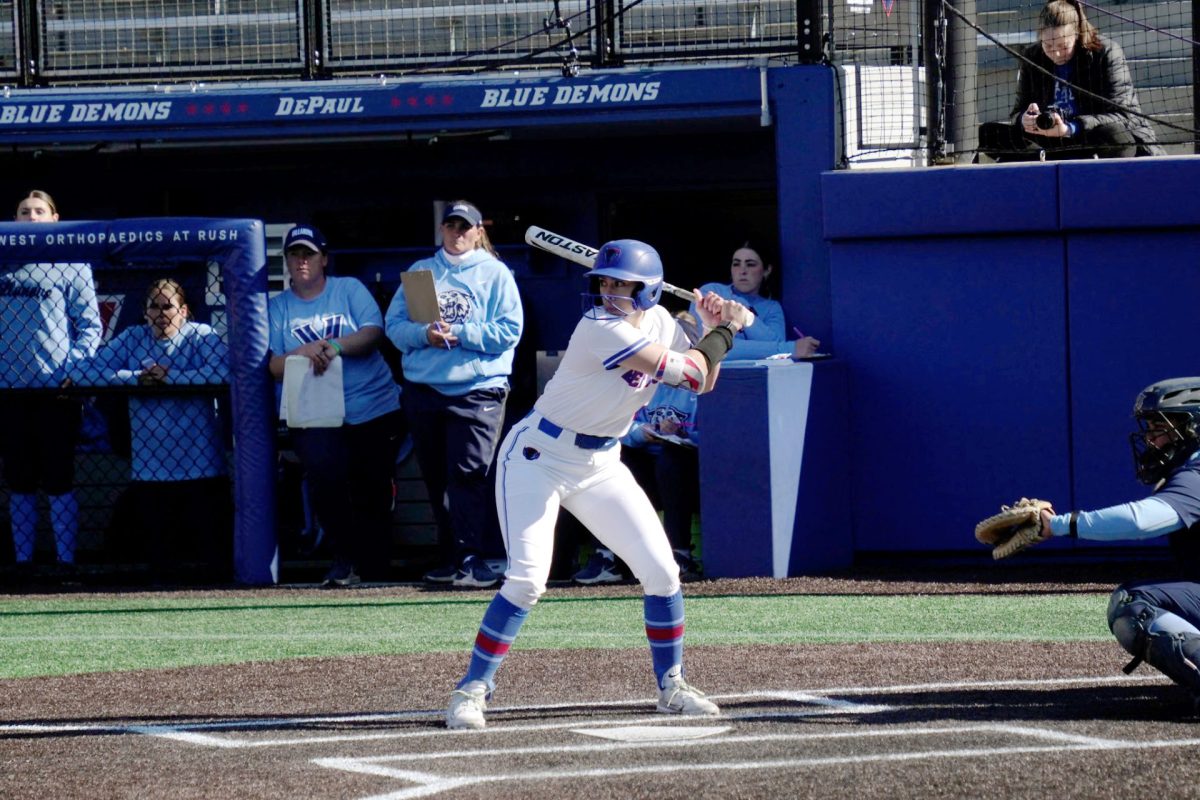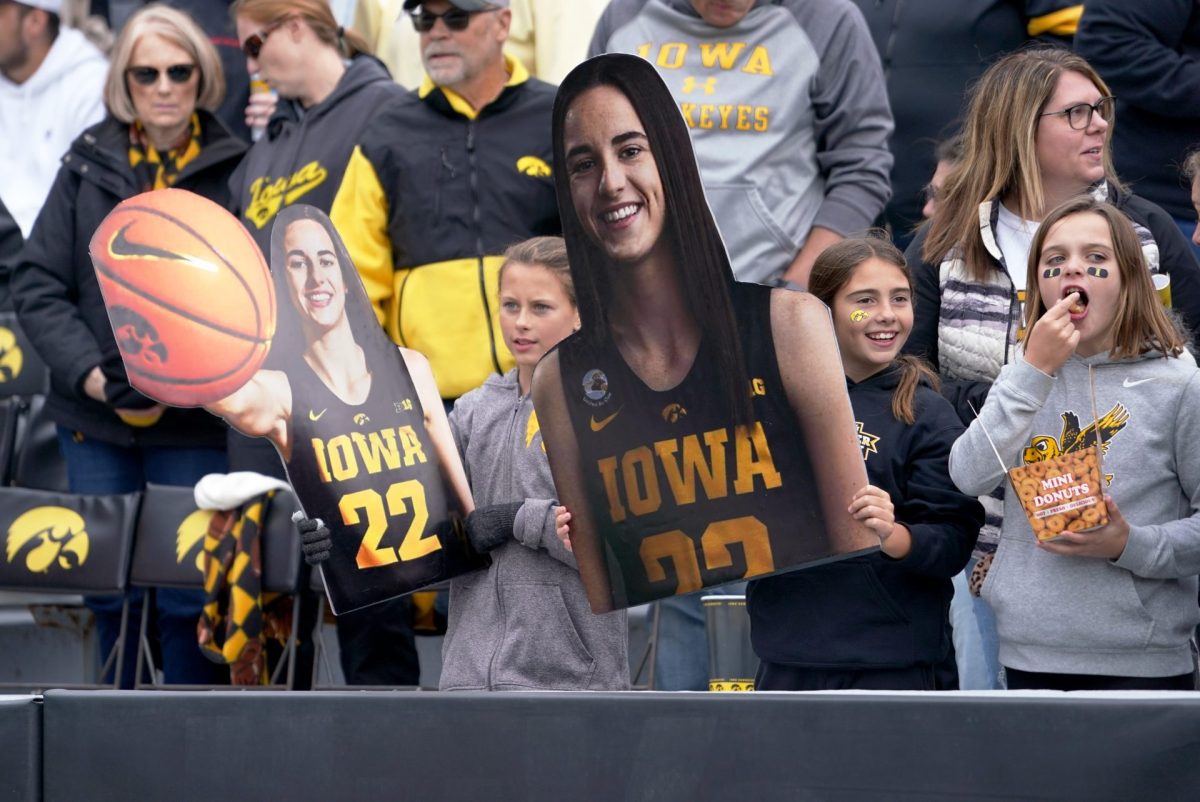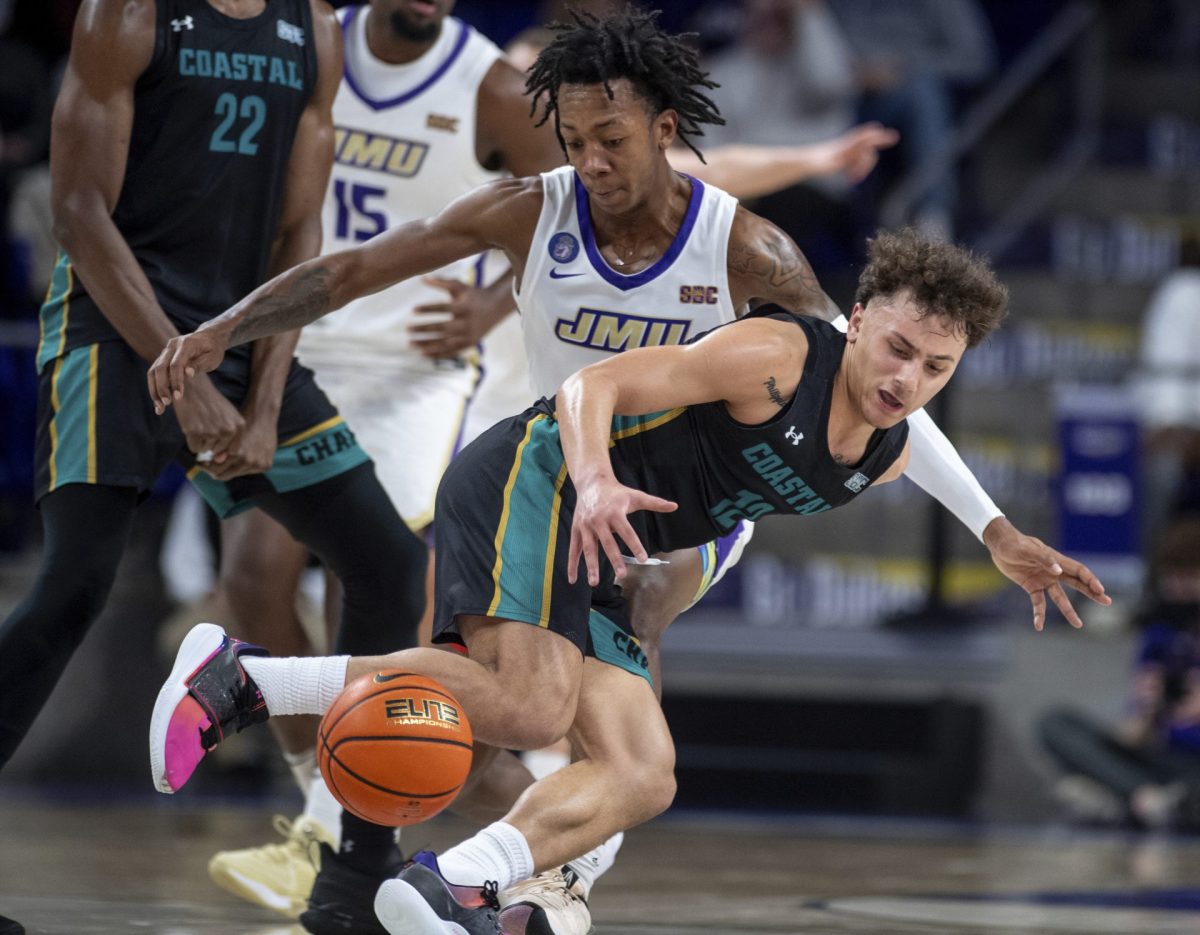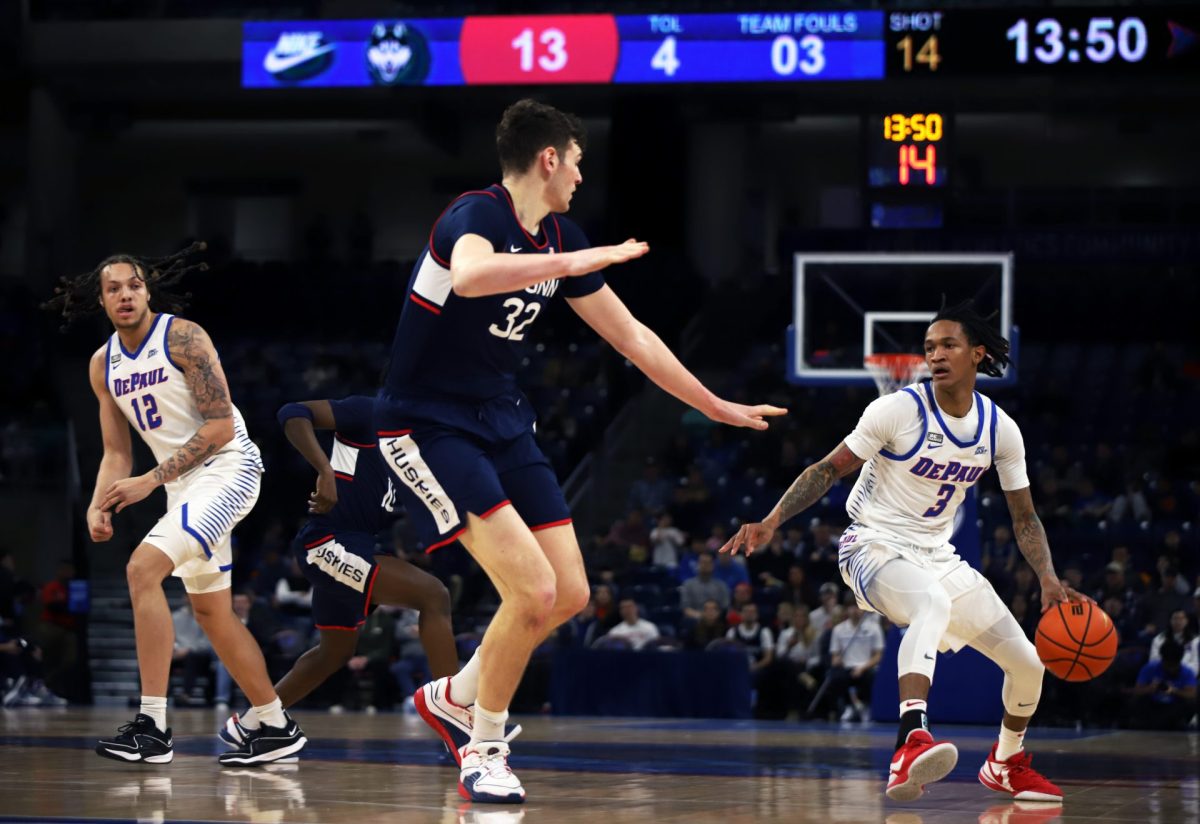The Big East is arguably the most competitive conference in college basketball. Traditional powerhouses like Louisville and Connecticut fill the stands nightly with a raucous crowd, raking in dollar upon dollar in revenue that can be spread around to other sports. The Blue Demons’ half-empty Allstate Arena gives DePaul athletics less to work with.
To get where they need to be, the athletic department pieces together the revenue from its sports, but also relies on money from the university and students’ tuition beyond the athletic fee laid out on a student’s bill. Still, DePaul spends less on its athletic expenses overall than any of its conference counterparts.
All students, both undergraduate and graduate, pay a $25 athletic fee as part of their tuition in the fall, winter and spring quarters—a total of $75 per student per year. The fee was approved by the Board of Trustees and supported by Student Government Association when it was implemented for the 2004-05 school year.
Athletic Director Jean Lenti Ponsetto said the fee was created not as a way to increase revenue, but as an attempt to build affinity and foster school pride.
| Team revenue | Men’s basketball revenue | Men’s basketball expenses | |
| DePaul | $14,245,247 | $6,528,661 | $6,528,661 |
| Marquette | $16,397,647 | $13,877,475 | $8,185,030 |
| Providence | $14,407,038 | $6,460,838 | $4,696,862 |
| Seton Hall | $15,379,053 | $6,215,923 | $6,215,923 |
| St. John’s | $17,858,341 | $6,741,298 | $6,741,298 |
“The motivation at the time wasn’t and still hasn’t been [revenue], that’s why we haven’t changed the amount, we weren’t looking to generate revenue off of it,” Ponsetto said, adding that she’s never felt like they needed to elevate the fee to offset any costs.
And there are plenty of costs—but not quite as much as at other schools.
For the 2009-10 Equity in Athletics Data Analysis report, the most recent available, the athletic department’s total expenses for all teams was $14,245,247—the lowest number in the Big East.
Marquette, which Ponsetto considered the most comparable athletic program in the conference, reported nearly $8 million more than DePaul in team expenses, a difference Ponsetto described as “pretty compelling.”
The two schools had about a $2 million difference in expenses for men’s basketball. Marquette spent roughly $8.2 million versus DePaul’s $6.5 million. But at the end of the year, Marquette came away $5 million richer, raking in close to $13.9 million from men’s basketball alone. DePaul? No loss, no gain.
And for the Blue Demons, that held true for the entire athletics program, whose total expenses and total revenue were equal for the year.
As for the fee, DePaul President Fr. Dennis Holtschneider said the idea is to minimize the cost to students for access to athletic events.
“The way that you keep the cost of this down is, you spread it among many, many people, and that’s the way DePaul chose to do it,” Holtschneider said. “Every student has the ability to take advantage of it. And if you decide to take advantage of it, you get far beyond your money’s worth, but it’s your decision whether to take advantage of it.”
According to Carolyn Lewis, director of business and financial affairs, there are only a few exceptions to paying the $25 per quarter.
“For instance, distance learners, people studying abroad,” she said. “If you’re studying abroad for a quarter then that quarter you don’t pay.”
The fee, which according DePaul is the lowest of its kind in the Big East, brings the athletic department about $1.8 million. That goes to a program that, in essence, broke even last year. And they are not alone. Marquette, despite making money on men’s basketball, also finished even.
Of the 16 schools in the Big East, only six schools actually reported earning money from the athletic department. All six— Connecticut, Georgetown, Louisville, Notre Dame, USF, and West Virginia—field football teams.
One of the ways DePaul reached the break even point was because of not allocated revenues—money that was not given to a specific gender or specific sport. The athletic department’s not allocated revenue totaled $6,699,757 last year.
“It could be donations, maybe just to the athletic department in general,” Lewis said. “Somebody just wants to give to athletics. They don’t give to a specific sport or programs.”
About $1.8 million of the not allocated revenue comes from the student athletic fees.
“If you add that to the $8-9 million that we generate in ticket sales, corporate sponsorships, and Big East television revenue and all that kind of stuff,” Ponsetto said, “so now you’re looking at a little bit lesser number in terms of a deficit.”
But there is still a deficit that has to get filled. And most of that comes from the revenue the university generates from student tuition.
Ponsetto said that “it would likely be the case” that most of the not allocated revenue would come from the university. Due to the relatively small expenses and large student body however, Holtschneider said that the additional money students are paying is not significant.
“The one thing that’s useful at DePaul is to remember our budget is not inconsiderable. However, it is spread over 25,000 students,” he said. “And you have universities in the Big East like Providence that are far smaller than us, that the share of what they’re paying for athletics is far less…the share for student divided by 25,000 is pretty low.”
He said the university’s increased visibility after the move to the Big East has made DePaul a recognizable name nationally rather than just regionally, and that using tuition money on athletics above the student athletic fee is worth it for alumni looking for jobs outside of the Midwest.
“There is nothing that puts DePaul’s name out in the newspaper or in the media more than DePaul athletics,” Holtschneider said. “You wish it was the chemistry department or one of our other departments, but it’s not.”
And the athletic department does not have free reign. As an extension of the university, they must go through the same process as any other department when requesting extra funding.
“We’re a part of the university like everybody else is, so we make requests the same way. We’re subject to the same scrutiny,” Ponsetto said. “There’s no wave of a magical wand when athletics needs something that we have to get.”
The process requires the athletic department to make a presentation before the Strategic Resource Allocation Committee—also known as SRAC—when requesting more funding. According to Ponsetto, that can include asking for more scholarships, increasing salaries and getting more operating dollars for team travel, equipment or recruiting.
“They all go through a process that we nicknamed SRAC at DePaul,” Holtschneider said. “It’s a committee that meets all throughout the fall and they propose the budget for the next year… And that’s made up of faculty, staff and students, and they work together and they create the budget, and they propose it to me and I propose it to the Board of Trustees.”
When Ponsetto was looking into hiring men’s basketball Head Coach Oliver Purnell, she said she had to justify her case for a significant increase in the head coach’s salary.
“In terms of being able to attract a high-quality coach, someone who’s had a lot of success, you obviously have to put yourself in a position to financially be able to afford them,” Ponsetto said.
Former men’s basketball head coach Jerry Wainwright was paid $539,997 in base compensation according to the university’s 2009 tax documents, the most recent available. He was the university’s highest compensated employee that year. His successor, Oliver Purnell reportedly makes between $1.6 and $1.8 million—DePaul athletics declined to release current salary information.
Holtschneider, who said he wholeheartedly approved of the decision to hire Purnell, said when he brought the budget to the Board of Trustees, there were two possible decisions.
“What I told them at the time was, we were at the bottom of the Big East in men’s basketball, and we were at the bottom of the Big East for spending in men’s basketball,” Holtschneider said. “I told them that my recommendation to them was either we invest more so that we can be competitive in the Big East, or we get out of the Big East. But we had made a commitment to the Big East and our other teams were doing fine.”
“I said, I don’t believe that we should continue on the same path because we’ll get the same results,” Holtschneider said of the low investment in men’s basketball. “So the board thought about it, and the board decided … They raised the budget for a competitive salary.”
For students that are interested in seeing where their money is going, Holtschneider said they can simply ask.
“Anyone that has a question we’re certainly willing to share it,” Holtschneider said. “None of that is secret information.”







